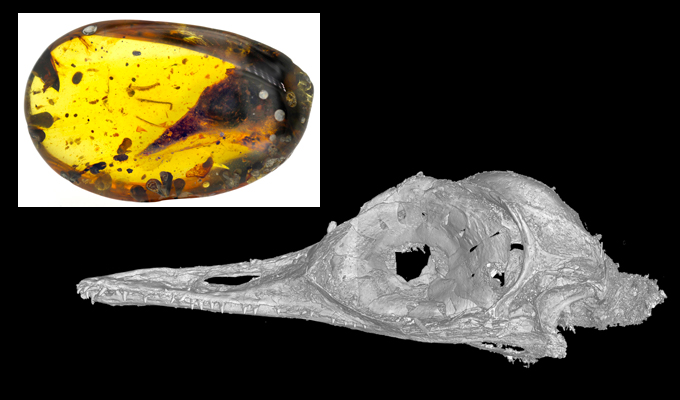A new species of bird-like dinosaur
identified from a skull trapped in amber is described in a news. The new
species may represent the smallest Mesozoic dinosaur reported.

Background
Of modern birds, the only dinosaurs still
living in present time, the bee hummingbird is the smallest. Studies revealed
that the Mesozoic bird had little else in common with present time
nectar-sipping hummingbirds.
Details
➤Discoveries in amber are providing
unprecedented insights into the soft tissue and skeletal anatomy of small
animals that are not typically preserved in other sediments owing to their
fragile nature.
➤The tiny ,bird-like skull
was discovered in approximately 100 million-year-old amber from northern
Myanmar, which is named Oculudentavis Khaungraae.
➤The skull of the well-preserved specimen
is only 7.1 mm in length and indicates the dinosaur was similar in size to the
bee hummingbird, the smallest living bird.
➤The creature may have been the product of
evolutionary miniaturization, whereby animals evolve smaller adult body sizes.
➤Anecdotal evidence suggests that the
chunk of amber containing the bird skull may have come from a region in Myanmar
that many millions of years ago was part of an island chain.
Comments
Post a Comment